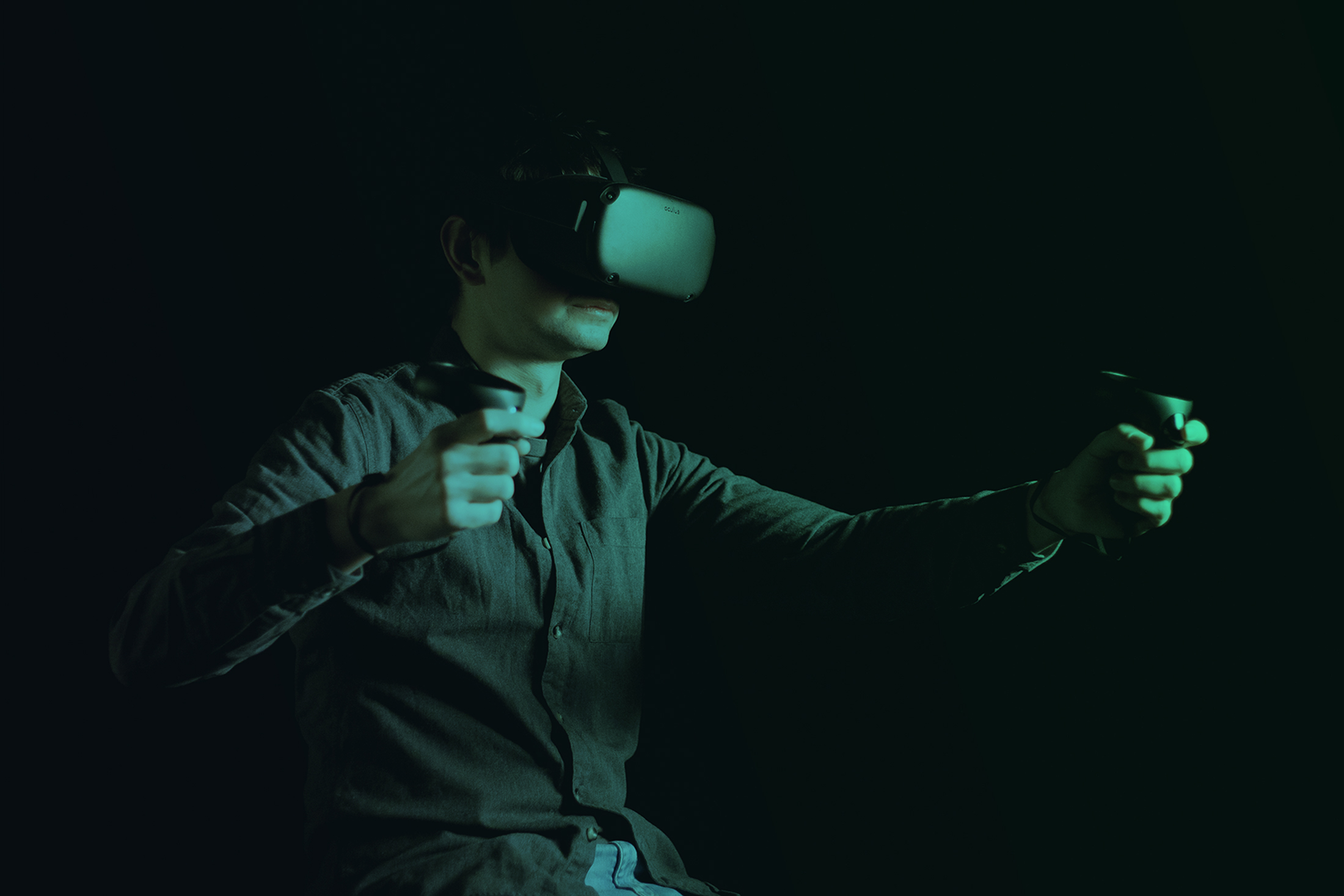Publications
The library contains publications providing information on recent and emerging virtual reality technologies and their application in rehabilitation. Details can be found on authors, research, technology, area of impact as well as location.
VR4REHAB is providing this library as a service for all stakeholders in rehabilitation to showcase past, current and future work with neither assessment of quality of content nor evaluation of claims made by the original authors. Therefore, reference to any work or products in the library does not constitute an endorsement or recommendation by VR4REHAB.
"Adults with chronic low back pain, disability, moderate-to-severe pain, and high fear of movement and reinjury were recruited into a trial of a novel, automated, digital therapeutics, virtual reality, psychological intervention for pain (DTxP). We conducted a 3-arm, prospective, double-blind, pilot, randomized, controlled trial comparing DTxP with a sham placebo comparator and an open-label standard care."
"We present a new embodied Semi-Autonomous Mentoring Intelligence (SAMI) avatar used in an immersive virtual reality intervention for the self-management of chronic pain. We discuss the research findings that were taken into consideration and guided the design and development of SAMI, such methods to promote working alliance with non-human agents, optimal characteristics of non-human agents, and features of effective “automation."
"Thirty study participants playtested an innocent-looking "escape room" game in virtual reality (VR). Behind the scenes, an adversarial program had accurately inferred over 25 personal data attributes, from anthropometrics like height and wingspan to demographics like age and gender, within just a few minutes of gameplay. As notoriously data-hungry companies become increasingly involved in VR development, this experimental scenario may soon represent a typical VR user experience. While virtual telepresence applications (and the so-called "metaverse") have recently received increased attention and investment from major tech firms, these environments remain relatively under-studied from a security and privacy standpoint. In this work, we illustrate how VR attackers can covertly ascertain dozens of personal data attributes from seemingly-anonymous users of popular metaverse applications like VRChat."
"ICU treatments frequently result in long-term psychologic impairments, negatively affecting quality of life. An effective treatment strategy is still lacking. The aim of this study was to describe and evaluate the safety and immersiveness of a newly designed ICU-specific virtual reality module."
Despite the available evidence regarding effectiveness of stroke telerehabilitation, there has been little focus on factors influencing its delivery or translation from the research setting into practice.
Neurological disorders affect the lifestyle and the living conditions of a patient. Virtual Reality is a technology that may be used to simulate various types of tasks in a computerized environment guiding the patient and help on rehabilitation
"Inspired by prior research and qualitative insights from XR professionals, we discuss the meaning and definitions of various terms and organize them in our proposed framework."
In this case report, we used virtual reality (VR) to explore pain evoked by only the appearance of being touched (rather than actually being touched) in a person with complex regional pain syndrome type II.
his 2021 Springer book is the third volume of a trilogy focused on Technologies for Inclusive Well-Being that includes a 2014 volume focused upon serious games, alternative realities, and play therapy, through to a 2017 volume focused on applied technologies ranging from worn to off-body sensing, virtual worlds, and games for serious applications.
Recent evidence supports the use of immersive virtual reality (immersive VR) as a means of applying visual feedback techniques in neurorehabilitation. In this study, we investigated the benefits of an embodiment-based immersive VR training program for orthopedic upper limb rehabilitation, with the aim of improving the motor functional ability of the arm and accelerating the rehabilitation process in patients with a conservatively managed distal radius fracture.
This scoping review aimed at providing an overview of the applications of a virtual coach in the clinical field. In particular, the review focused on the papers that provide tangible information for coaching activities with an active implication for engaging and guiding patients who have an ongoing plan of care.
Home-based rehabilitation after an acute episode or following an exacerbation of a chronic disease is often problematic with a clear lack of continuity of care between hospital and home care. Secondary prevention is an essential element of long-term rehabilitation where strategies oriented toward risk reduction, treatment adherence, and optimization of quality of life need to be applied
Providing a suitable rehabilitation after an acute episode or a chronic disease helps people to live independently and enhance their quality of life. However, the continuity of care is often interrupted in the transition from hospital to home.
End-user involvement constitutes an essential goal during the development of innovative solution, not only for the evaluation, but also in codesign, following a user-centered strategy. Indeed, it is a great asset of research to base the work in a user-centered approach, because it allows to build a platform that will respond to the real needs of users.
This study aimed to investigate: 1) the effect of optic flow speed manipulation on active participation during robot-assisted treadmill walking (RATW), 2) the influence of the type of virtual environment, and 3) the level of motion sickness and enjoyment. Twenty-eight healthy older adults were randomized in two groups: “stimulus rich” Park group (50% male, 61± 6 year) and “stimulus poor” Hallway group (43% male, 62± 5 year).
During gait training in persons with central nervous system (CNS) movement disorders, virtual reality (VR) can offer added value by providing task-specific gait training in more interactive and motivating environments.
"This integrative review aimed to identify, analyse and synthesise studies investigating the clinical efficacy of virtual reality (VR) distraction for children undergoing varying painful and anxiety-inducing medical procedures across different hospital settings and to identify implications for research and clinical practice."
To determine the clinical effectiveness of adding virtual reality via the Nintendo Wii console and its Wii Balance Board to physiotherapy treatment in patients with total hip arthroplasty.
